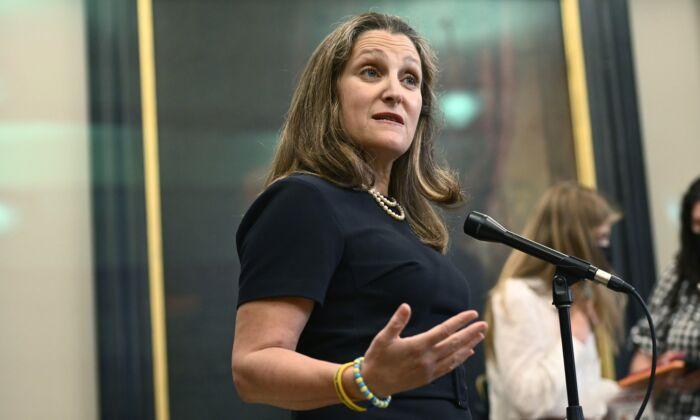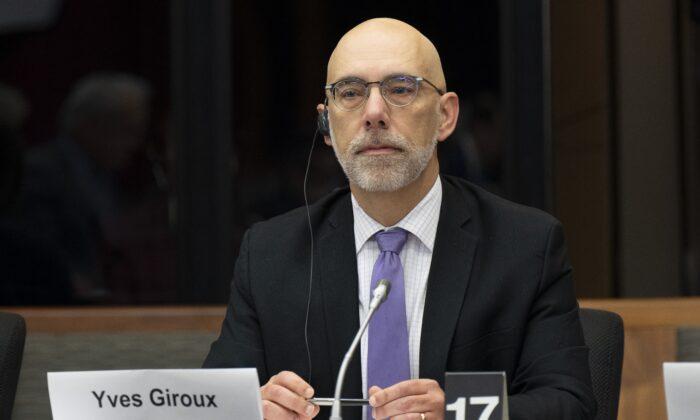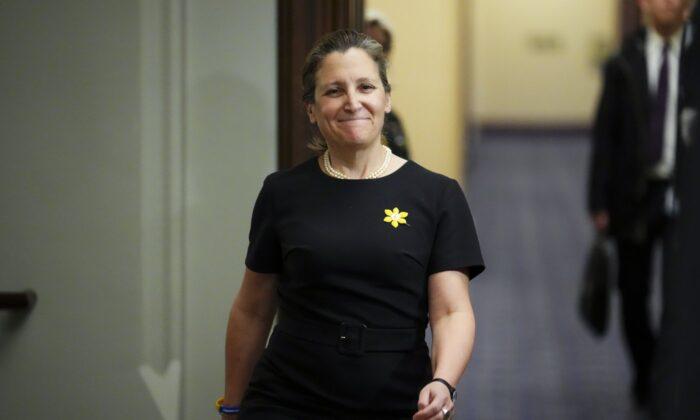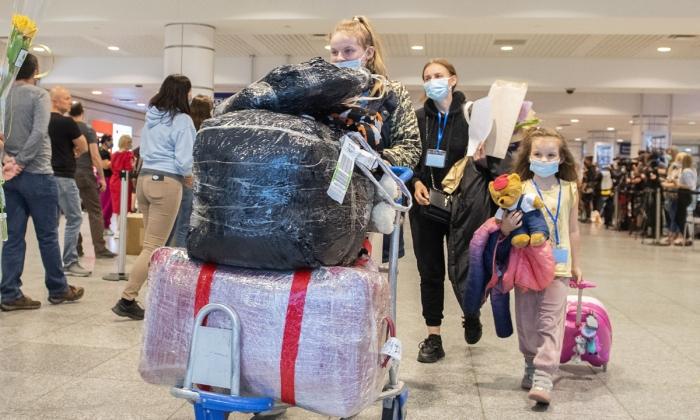Deputy Prime Minister Chrystia Freeland says that the “door is open” on the possibility of the federal government introducing a subsidy to bring down the cost of fertilizer for farmers, exacerbated by supply shortages and Canadian tariffs on Russian fertilizer.
“Some Canadian farmers, because of their historical relationships and historical dependencies, have been affected and we think it is very appropriate to have a conversation and make an effort to acknowledge that and to support those farmers,” Freeland told reporters in Ottawa on Dec. 15.
“I am working closely with the Minister of Agriculture to support her in her work—to be sure that we as a country bear in mind the very specific interests of those farmers.”
Freeland said the government’s work on the issue is “ongoing,” adding, “We'll have more to say soon.”
“The door is open,” she said in French.
A government source also told The Epoch Times that the Department of Agriculture and Agri-Food Canada (AAFC) is working on a $34.1 million fund for farmers’ associations to subsidize fertilizer costs. The source asked to remain anonymous as the plans are not yet finalized.
Fertilizer Costs
Professor Sylvain Charlebois, director of the Agri-Food Analytics Lab at Dalhousie University, previously said that some Canadian farmers have paid tariffs of up to 35 percent to import fertilizer.“Even surcharges are added these days. In fact, some farmers are even purchasing without knowing what the price will be if they decide to commit,” Charlebois said by email in May.
A number of farmers in Northern Ontario also previously told The Epoch Times that fertilizer costs have nearly doubled due to tarriffs and supply shortages.
Mooney said he purchased fertilizer in Spring 2021 for around $600 per ton, but buying the same amount in Spring 2022 cost him about $1,100.
“When it’s that expensive, it has to go pretty far,” said another farmer in the area named Charlie Smith.
The federal government’s current climate plan proposes a voluntary fertilizer emissions reduction target for farmers of 30 percent below 2020 levels by 2030.
“The goal is to maximize efficiency, optimize fertilizer use, encourage innovation, and to work collaboratively with the agriculture sector,” AAFC wrote in an email in August.





